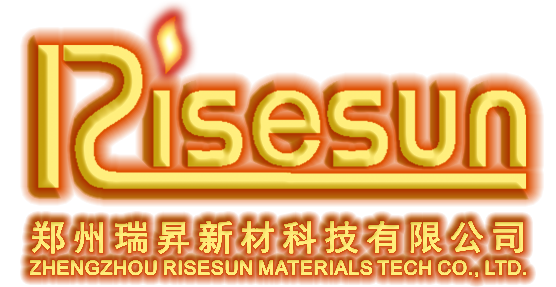16
2025
-
01
Exploring the Benefits of Silicon Molybdenum Rods in Electrical Heating Applications: A Comprehensive Guide
Exploring the Benefits of Silicon Molybdenum Rods in Electrical Heating Applications Table of Contents 1. Introduction to Silicon Molybdenum Rods 2. Key Properties of Silicon Molybdenum Rods 3. Advantages of Using Silicon Molybdenum Rods 4. Applications in Electrical Heating 5. Silicon Molybdenum Rods vs. Traditional Heating Elements 6. Environmental Impact and Sustainabil
Exploring the Benefits of Silicon Molybdenum Rods in Electrical Heating Applications
Table of Contents
- 1. Introduction to Silicon Molybdenum Rods
- 2. Key Properties of Silicon Molybdenum Rods
- 3. Advantages of Using Silicon Molybdenum Rods
- 4. Applications in Electrical Heating
- 5. Silicon Molybdenum Rods vs. Traditional Heating Elements
- 6. Environmental Impact and Sustainability
- 7. Future Trends in Heating Technologies
- 8. Frequently Asked Questions
- 9. Conclusion
1. Introduction to Silicon Molybdenum Rods
Silicon molybdenum rods, often referred to as SiMo rods, are advanced materials extensively used in the field of electrical heating. These rods combine the properties of silicon and molybdenum, resulting in a product that boasts exceptional thermal conductivity, mechanical strength, and corrosion resistance. As industries increasingly seek more efficient heating solutions, silicon molybdenum rods are emerging as a key component of modern electrical heating applications.
2. Key Properties of Silicon Molybdenum Rods
The effectiveness of silicon molybdenum rods can be attributed to their unique properties:
2.1 High Thermal Conductivity
Silicon molybdenum rods exhibit excellent thermal conductivity, making them ideal for applications requiring rapid heat transfer. This property ensures that heat is distributed evenly across the surface, reducing the risk of hot spots and enhancing the overall performance of heating systems.
2.2 Mechanical Strength
These rods possess exceptional mechanical strength, allowing them to withstand high temperatures and mechanical stress without deforming. This durability is critical in environments where traditional heating elements would fail.
2.3 Corrosion Resistance
One of the standout features of silicon molybdenum rods is their resistance to oxidation and corrosion. This property significantly extends the lifespan of the heating elements, reducing maintenance needs and operational costs.
3. Advantages of Using Silicon Molybdenum Rods
The integration of silicon molybdenum rods in electrical heating applications comes with numerous advantages:
3.1 Enhanced Efficiency
Silicon molybdenum rods improve the efficiency of heating systems. Their high thermal conductivity means that less energy is wasted, leading to lower operational costs and a more environmentally friendly heating solution.
3.2 Versatile Applications
These rods are versatile and can be used in various heating applications, including industrial furnaces, laboratory equipment, and even in the aerospace sector, where high-temperature resistance is essential.
3.3 Cost-Effectiveness
While the initial investment in silicon molybdenum rods may be higher than traditional heating elements, their longevity and reduced energy consumption make them a cost-effective solution in the long run.
4. Applications in Electrical Heating
Silicon molybdenum rods have a wide range of applications in electrical heating:
4.1 Industrial Furnaces
In industrial furnaces, silicon molybdenum rods are used for high-temperature heating, allowing for the efficient melting and processing of metals and ceramics.
4.2 Laboratory Equipment
Research laboratories benefit from the precise temperature control offered by silicon molybdenum rods, making them ideal for experiments requiring consistent heating.
4.3 Aerospace Applications
In the aerospace industry, these rods are used in applications where weight and thermal performance are paramount. Their ability to withstand extreme temperatures makes them a preferable choice for components on spacecraft and high-performance aircraft.
5. Silicon Molybdenum Rods vs. Traditional Heating Elements
When comparing silicon molybdenum rods to traditional heating elements, several factors come into play:
5.1 Longevity
Silicon molybdenum rods outlast traditional heating elements due to their superior corrosion resistance and mechanical strength, resulting in decreased downtime for replacements.
5.2 Energy Consumption
The efficiency of silicon molybdenum rods translates to lower energy consumption compared to traditional heating elements, which often waste energy through inadequate heat distribution.
5.3 Performance Under Stress
Traditional heating elements may struggle under high-stress environments. In contrast, silicon molybdenum rods maintain performance without compromising integrity, ensuring reliability in critical applications.
6. Environmental Impact and Sustainability
The shift towards silicon molybdenum rods aligns with the growing emphasis on sustainability within industries. Their efficiency not only reduces energy consumption but also minimizes the carbon footprint associated with heating processes. Furthermore, the longevity of these rods leads to less waste over time, contributing to more sustainable industrial practices.
7. Future Trends in Heating Technologies
As technology continues to evolve, the role of silicon molybdenum rods in electrical heating applications is expected to expand:
7.1 Innovations in Material Science
Ongoing research in material science may lead to further enhancements in the properties of silicon molybdenum rods, improving their efficiency and application range.
7.2 Integration with Smart Technologies
The future may see silicon molybdenum rods integrated with smart technology, allowing for real-time monitoring and control of temperature, leading to even greater energy efficiency and effectiveness in heating applications.
8. Frequently Asked Questions
8.1 What are the key benefits of silicon molybdenum rods in heating applications?
Silicon molybdenum rods offer high thermal conductivity, mechanical strength, and corrosion resistance, making them ideal for various heating applications, including industrial and laboratory settings.
8.2 How do silicon molybdenum rods compare to traditional heating elements?
Silicon molybdenum rods outlast traditional heating elements, consume less energy, and perform better under high-stress conditions.
8.3 Are silicon molybdenum rods environmentally friendly?
Yes, their efficiency reduces energy consumption and, consequently, the carbon footprint associated with heating processes.
8.4 In what industries are silicon molybdenum rods primarily used?
They are used in various industries, including manufacturing, aerospace, and research laboratories.
8.5 What is the lifespan of silicon molybdenum rods compared to other heating elements?
Silicon molybdenum rods typically have a longer lifespan due to their durability and resistance to corrosion, reducing the frequency of replacements.
9. Conclusion
Silicon molybdenum rods represent a significant advancement in electrical heating technologies. With their impressive thermal properties, mechanical strength, and versatility, they are not only enhancing efficiency in various applications but also paving the way for more sustainable practices in industries worldwide. As we move towards a future increasingly focused on innovation and environmental responsibility, the role of silicon molybdenum rods will undoubtedly continue to grow, making them an essential component in the evolution of heating technologies. Embracing these advanced materials is crucial for industries looking to stay competitive and sustainable in an ever-evolving market.



